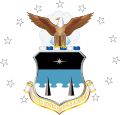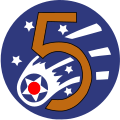This article has multiple issues. Please help improve it or discuss these issues on the talk page . (Learn how and when to remove these messages)
|
70th Flying Training Squadron  | |
|---|---|
 Cirrus T-53 used in airmanship training at the USAF Academy | |
| Active | 1941–1946; 1953–1966; 1972–1973; 1973–1975; 2005–present |
| Country | |
| Branch | |
| Role | Airmanship Training |
| Part of | Air Force Reserve Command |
| Garrison/HQ | United States Air Force Academy |
| Motto(s) | Duces Volantes (Latin for 'Flying Leaders') |
| Engagements | Southwest Pacific Theater [1] |
| Decorations | Distinguished Unit Citation Philippine Republic Presidential Unit Citation [1] |
| Commanders | |
| Current commander | Lieutenant Colonel Rodriguez[ citation needed ] |
| Insignia | |
| 70th Flying Training Squadron emblem [note 1] [1] |  |
| 70th Bombardment Squadron emblem (SAC era) [note 2] |  |
| 70th Bombardment Squadron emblem [note 3] [2] |  |
The 70th Flying Training Squadron is reserve unit of the United States Air Force based at the United States Air Force Academy, Colorado.
Contents
- Mission
- History
- World War II
- Cold War
- Pilot training
- Lineage
- Assignments
- Stations
- Aircraft
- See also
- References
- Notes
- Bibliography
The squadron augments the 94th Flying Training Squadron for glider training, augments the parachuting element of training for the 98th Flying Training Squadron, and supports the 557th Flying Training Squadron by assisting the cadet flying team compete at a national intercollegiate level as well as providing oversight in the academy flight screening program.







